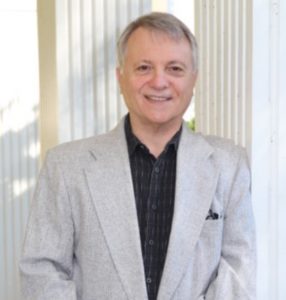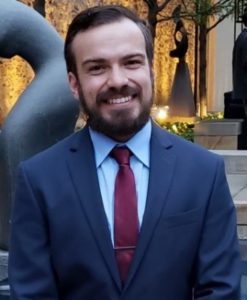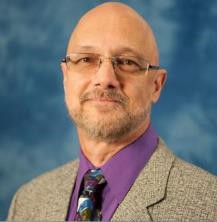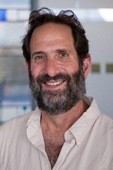The moon offers an abundance of minerals and resources needed on earth and for space travel. Come help us assess what can be extracted and techniques to accomplish it.
Abstract:
As earth sustainability quickly becomes a concern, the opportunity to mine needed resources on planetary and the moon surfaces is becoming of increasing interest. Exploration missions to the moon and Mars have identified key elements needed on earth and for future space travel. Lunar mining is the first important step.
Northrop Grumman Corp is an active member of the Lunar Surface Innovation Consortium (LISC) which is assisting NASA in evaluating technologies that enable affordable, robust, autonomous manufacturing and construction on the lunar surface to establish a sustained human presence. We are investigating technologies related to lightweight manufacturing, mining, and equipment that can process in-situ lunar surface materials. Relevant manufacturing and assembly processes are being assessed, some of which are additive construction, deployable metal structures, material sintering, and molten regolith fiber pulling. LSIC participants are working on lunar oxygen mining and water mining, among other projects and techniques, but a near term action needing research involves the acquisition of Helium-3.
Helium-3 is an extremely rare isotope on Earth but is abundant on the Moon. Current market demand for 3He is recently estimated at $192 Million per year. US demand before 2010 was 100,000 liters per year, but because of its limited supply, is currently rationed to ~15,000 L/yr. We propose a new considerably scaled down version of lunar miner resulting in a potential production of 1 kg per year. Can such a system be realistically built to support the established market? At present Astrobotic CLPS/Viper prices of $199.5M for 450 kg gives 150 kg payload return to Earth. The value of this 150 kg of 3He at current prices is $4.5 Billion, which would far exceed the transport cost.
Students on this MDP team will develop and demonstrate the feasibility of a mission to extract 1 kg of He3 (and potentially other valuable molecules) from the moon. Their work will include evaluating the Students on this MDP team will develop and demonstrate the feasibility of a mission to extract 1 kg of He3 (and potentially other valuable molecules) from the moon. Their work will include evaluating the sequence unit operations required to achieve mining, extraction and purification, transportation to/from the lunar surface as well as evaluation of the financial viability of the proposed system (including launch/return transportation costs).to/from the lunar surface as well as evaluation of the financial viability of the proposed system (including launch/return transportation costs).
Impact:
The impact of this project has the potential to show a new way to solve this critical world problem, and to also help in space exploration by evaluating resources on the moon.
Full Project Details
Material Properties Molecular Separation (1-2 Students)
Specific Skills: Inorganic, materials, and analytical chemistry. Chemical separation process development.
Likely Majors: MSE, Chem, ChE, NERS, Engineering Physics
Bulk Separation Process (3 Students)
Specific Skills: Design of bulk materials processing, mining techniques, material separation, equipment development, gas collection and storage
Likely Majors: ChE, ME, MSE, NERS, Engineering Physics
Excavation Techniques (2 Students)
Specific Skills: Design of excavation processes and material transport. Economic costing of process.
Likely Majors: CEE, ME
Sponsor Mentors

Charles Radley
Staff Systems Engineer
Charles Radley is a spacecraft systems engineer who has worked on manned and unmanned spacecraft development and operations. Professional background includes B.S. Physics, M.S. Systems Engineering, 20+ years aerospace experience. He is an EIT Engineer in Training registered in the State of California, and an Associate Fellow of the American Institute of Aeronautics and Astronautics. In 1981 he started work on communications satellite systems integration, launch campaigns, and range safety. Later he was instrumental in developing proposals for lunar space missions for the 1990 Space Exploration Initiative. He was a member of the subcontractor teams for the Galileo and Magellan space probes, the International Space Station, experiments for Spacelab MSL-1 and several communications satellite projects (e.g., Intelsat-6, Olympus, HS-601, HS-376, Inmarsat-2, Marecs). He worked on the Mobile Transporter, and the power system for NASA Space Station Freedom which became ISS. He is an inter-disciplinary engineer, specializing in systems safety and hazards analysis as well as mission operations. He was principal author of the NASA Guidebook for Safety Critical Software.
In recent years he worked as a NASA contractor reviewing the SpaceX Crew Dragon software process. At Northrop Grumman he has worked on the HALO project, HLS lunar transfer stage and the Mission Recovery Vehicle.

Dr. Anthony J. DeCicco
Sr. Systems Engineer
Dr. Anthony DeCicco works on transformative space technology programs within the Northrop Grumman Corporation (NGC). Anthony joined NGC after receiving his Ph.D. in Aerospace Engineering from the University of Maryland under the NASA Space Technology Research Fellowship. Anthony has experience in research-driven work environments working at MIT-Lincoln Labs and NASA on programs in additive manufacturing, composites, material survivability, and advanced propulsion technologies. At NGC, he is a Systems Engineer in the Future Technology Leaders program and works on human spaceflight systems. Anthony received his Bachelor’s and Master’s degrees in Mechanical Engineering in 2014 from Worcester Polytechnic Institute and his Ph.D. in Aerospace Engineering in 2018 from the University of Maryland.
Anthony has mentored multiple MDP teams in the past.
Executive Mentor

Andy Kwas
NG Fellow/Engineering Systems Architect
Andrew Kwas graduated from the University of Michigan in 1980 with a Master’s degree in Aerospace Engineering. He has 42 years with TRW/NGC working in advanced projects specializing in on orbit space products, astrophysics projects and weapon system developments. In Mr. Kwas’ role as a NG Fellow specializing in space and advanced manufacturing supports NASA, AFRL, NRO, DARPA, SMDC, ORSO and the Navy in high tech programs. Mr. Kwas is on the Technical Advisory Board for Cornell, U Michigan, Virginia Tech, Georgia Tech and U New Mexico. He is considered one of the prominent additive manufacturing (AM) experts in the country and has produced numerous papers in AM, advanced satellite technology, unique logistics solutions, and miniaturization of components. Mr. Kwas is an appointed Research Scholar at the University of New Mexico.
This is Andrew’s sixth MDP project.
Faculty Mentor

Professor Steve Yalisove
Materials Science
Professor Yalisove’s current research focuses on understanding the relationships between atomic structure and materials properties at surfaces and interfaces in a wide variety of material systems. He holds engineering degrees in MSE, ME, and AERO, and has industrial based post-doc experience at General Electric and AT&T Bell Labs.
Course Substitutions: Honors, ChE Elective, CE MDE, EE MDE, IOE Grad Cognate, MECHENG 490, MECHENG 590, SI Elective, SI Grad Cognate
Citizenship Requirements: This project is open to all students on campus.
IP/NDA: Student team members will sign NDA documents that are unique to Northrop Grumman.
In Person/Remote Participation Options:
Meetings and work will take place on campus as University policies allow.
Students on this team must be able to be physically present on campus in Ann Arbor and able to work on physical prototypes as local safety protocols allow.
Internship/Summer Project Activities: Depending on current public health guidelines, internships may be available.
